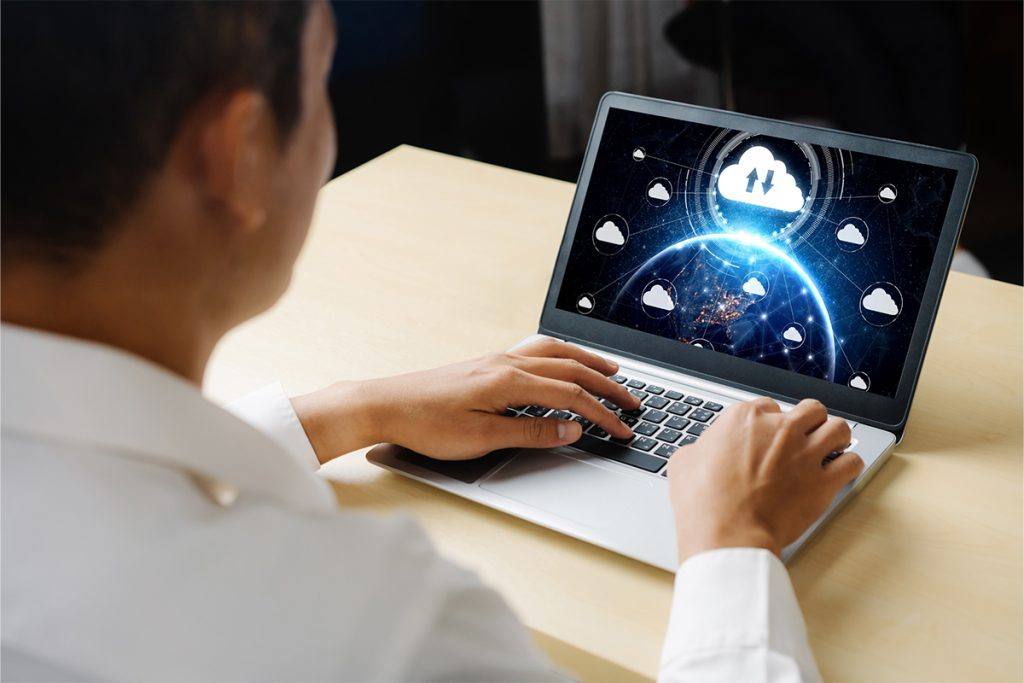Empowering the remote workforce and the IT environment means ensuring security, productivity, and efficient management of endpoints. Now, more than ever, organizations need to adopt modern and integrated security solutions which connect, authenticate, and protect remote devices and employees.
This blog captures some of the key discussion points and takeaways from the webinar hosted by GAVS, on ‘Remote Endpoint Management.’ The link to the entire webinar is available at the end of the blog.
The webinar was moderated by Mr. Chandra Mouleswaran – Senior VP and Head – IP and Infra Services at GAVS Technologies. The webinar was empaneled with senior technology leaders from GAVS: Kannan Srinivasan (Head – Cybersecurity), Alwinking Rajamani (VP – Customer Success), Suresh Kumar Ramasamy (VP – Product Engineering), and Muraleedharan Vijayakumar (Sr. Technical Manager).
Security Challenges in Remote Working
A recent McKinsey survey reported that the Covid-19 crisis has sped up the pace of digitalization by three to four years. With scores of employees moving to the remote workplace, the main challenge for businesses during the pandemic was to ensure a secure workplace for employees. However, patching problems, poor internet bandwidth, the unsecured home network, etc. raised concerns over security and data breaches. Misconfigured system patches or an application patch not applied on time raised concerns over security and data protection. Although employees were used to desktops, lack of awareness about data security presented the following challenges:
- Use of unsecured home networks or public wi-fi
- Lack of security in BYOD and mobile devices
- Laptop issues resulting in productivity loss
- Lack of security awareness among new joiners
- Office devices used for personal use
- Compliance issues due to digital nomads
- Enforcing organizational security policies
- Outdated antivirus and patching compliance
- Vulnerability assessment to meet compliance requirements
Virtual Desktop Access — The Need of the Hour
Gartner predicts that the number of DaaS (Desktop as a Service) users will grow by over 150% between 2020 and 2023. This predicted growth can be attributed to the general benefits observed by users across the world including, visibility of all desktops due to centralized connections, better monitoring of devices, enforceable security policies, and achieving 100% compliance. As remote devices such as laptops, smartphones, or tablets can be used for virtual desktop access, VDA is considered a win-win solution for both the security team and the employees. Broadly VDA addresses challenges through the following benefits:
- Protection from viruses by updating recent patches from a central location
- Secure work IT environment through HTTPS connections
- Reduced security issues on BYOD by adding an extra layer of security such as a firewall
- Laptop/desktop issues avoided as only a network connection is required to connect to any VDI environment
- Compliance issues resolved through a centralized system
- Unauthorized access avoided by enabling a timeout session or two-factor authentication
GAVS’ Virtual Desktop Infrastructure (VDI) Solution zDesk
The growth of remote workplaces has also led to issues such as time delays to resolve system and security issues, resource optimization, authenticity, Root Cause Analysis (RCA), and productivity. Implementing VDI solutions such as zDesk can help address these challenges. zDesk VDI is a hyper-scalable Zero Layer Architecture that assures seamless adoption of zDesk virtual desktops and flawless user experience. Powered by AI, zDesk offers customized implementation and support that helps reduce desktop IT costs while enhancing endpoint security and control. Some of the primary challenges resolved by zDesk:
- Scalability – zDesk installation is a very simple process. zDesk’s unique message bus and distributed management capabilities enable the platform to scale up or out linearly.
- Ability to address distributed teams – The connection broker replaces third-party solutions to manage and distribute desktop VMs. Hundreds of desktops can be managed in a single cluster and pool based on geographic locations or business units.
- Easy end-user computing – Significantly reduces initial capital and implementation costs. Helps reduce complexity, risk, power, and cooling requirements.
- Speed and performance – zDesk is built on the industry-leading KVM hypervisor, which has the lowest overheads while maintaining high-performance desktops and servers for the applications and end-users consuming them.
- Ease of onboarding – Users are classified and organized in groups. Each user group is provisioned and managed by VDI images/templates. The template driven approach is helpful in quick and easy onboarding of new users.
- Faster provisioning of new software/products – The provisioning of software is done through the easy-to-use management interface. zDesk also provides a simple to deploy and manage stack, which includes hypervisor, management, VM broker, gateway, and storage.
- Self-healing – When used in conjunction with GAVS’ AIOps platform ZIFTM, issues are proactively detected and autonomously self-remediated by leveraging the power of AI-led predictions and prescriptions!
This blog is only a high-level gist of the webinar. You can watch the entire discussion, including the poll questions, and the experts’ take on audience questions here.
GAVS periodically organizes insightful webinars with GAVS’ tech leaders, the leadership team, and industry thought leaders to explore current and emerging trends. To watch any of our webinar recordings, please visit https://www.gavstech.com/videos/.




